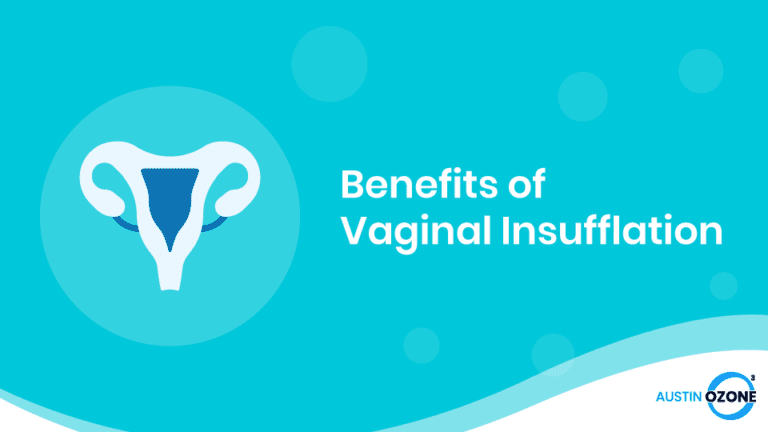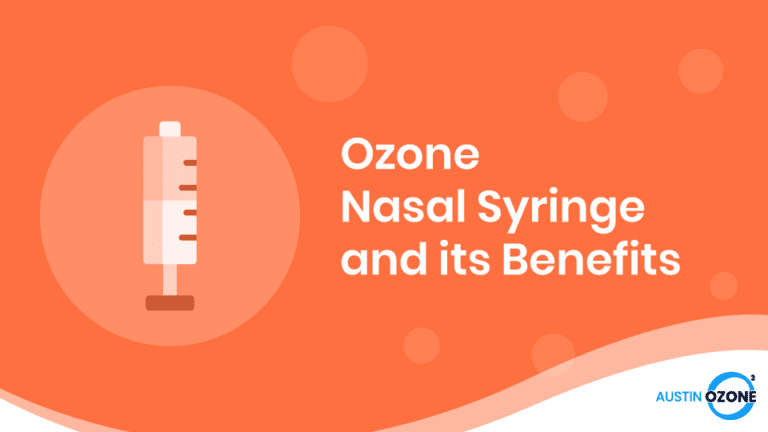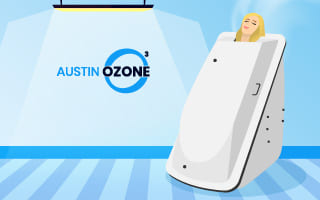For over 150 years10, the medical field has used Ozone (O3) therapy as a treatment method, mainly because of its reliability. It is used to strengthen the body’s defense mechanism and to treat diseases, infections, and wounds, among others. The ozone gas is known to combat as many as 114 diseases.
Ozone therapy has different types and is used in various localized parts of the human body. Vaginal insufflation is one of its many types, and in this method, the ozone gas plays a critical role in treating vaginal infections. It is proven to be effective compared to antibiotics.
Process of Ozone Therapy
As its name implies, ozone therapy refers to the use of ozone gas to treat the human body. It brings moderate oxidative stress2 as it interacts with fats, which in the process, increases the production of antioxidants, delivers oxygen into the tissues, and strengthens the body’s immune response.
The general process of ozone insufflation therapy involves the use of a catheter to introduce the gas to the body. However, depending on the part of the body it will be used on, the other tools involved will vary.
Regardless of the tools, however, ozone gas is absorbed by the cells it is introduced to. With ozone therapy’s application also varying2 and depending on the patients’ type of infection, it is clear how versatile and beneficial it is for the human body.
How to Perform Vaginal Insufflation?
Vaginal insufflation is most often used for vaginal infections. It is known to help in the treatment of yeast and bacterial vaginal infections, as well as pain in the vagina, labia, and pelvis8
Performing vaginal insufflation1 is easy. The first thing you have to do is to prepare all the equipment needed7: an oxygen source (tank or concentrator); an ozone generator that can produce ozone concentrations of at least up to 50 mcg/ml; a silicone tubing for the gas to travel through , the connector, the catheter, the face mask to avoid inhaling the ozone gas; and white towels to absorb the escaped ozone gas.
After preparing the necessary tools, you can connect the oxygen source to the generator and to the tubing and catheter. Afterwards, place the towels on your couch or seat and wear the mask for breathing protection.
It is important for you to wear a mask while performing the procedure because ozone gas is toxic if inhaled. At the same time, it should never be given in pure form. It must have no less than 95% of oxygen in it.
It is important for you to wear a mask while performing the procedure because ozone gas is toxic if inhaled. At the same time, it should never be given in pure form. It must have no less than 95% of oxygen in it.
If normal atmospheric air enters the mixture, a reactive property will be released, making the gas toxic. The amount of ozone gas is also dependent on the condition of the patient, as some irritation of the vaginal tissue may occur, which can be resolved easily by changing the ozone dosage.
Once all protections are secure, you can open the oxygen source, undress, and finally, insert the catheter inside your vagina. Make sure to set the ozone generator to the desired ozone concentrations; a range of 20 to 50 mcg/ml is sufficient.
During the short period of treatment, you can browse your phone, read a book, watch some videos, or have a cup of coffee. After 10 to 30 minutes, when you are done, turn off the ozone generator, turn off the oxygen, remove the catheter, and rinse it out with warm water.
You may repeat the treatment two to three times a week until the problem disappears.
Introduction Video About Ozone Vaginal Insufflation
Benefits of Vaginal Insufflation
Treats Bacterial Infections
Aside from the oxygenation of your cells and tissues, specifically in the vaginal area, the treatment is great for many bacterial infections4; such as bacterial vaginosis, vaginal herpes, and vaginal yeast infection. Many women today suffer from chronic vaginal issues, which are primarily caused by yeasts and microorganisms.
While antibiotics can effectively treat genital infection, they can also lead to imbalance in the number of good bacteria living in the human digestive tract. Traditional medicines, on the other hand, are not always effective.
Because of these issues, vaginal insufflation is now used as a reliable form of treatment for genital infections. This treatment method is effective since yeast and other microorganisms are sensitive to ozone and are killed immediately by it.
Destroys Antibiotic-resistant Bacteria
Other than treating the usual bacteria and infections, vaginal insufflation is also efficient in destroying antibiotics-resistant bacteria as well as bacteria not detectable by high vaginal swabs (HVS)3. It has successfully treated illnesses2 such as ureaplasma and mycoplasma.
Treats Sexually Transmitted Diseases
The treatment also helps with sexually transmitted infections4 like Gardnerella vaginalis, chlamydia, and cytomegalovirus. After undergoing ozone treatment, you can expect to see a decrease in symptoms, some of which are problematic discharge, odor, itching, discomfort, and pain during sexual intercourse.
Produces Antioxidants
With the help of ozone therapy, the body produces more antioxidants and increases immune system function.
Ozone treatment leads to a dramatic improvement in vaginal health and allows the normal growth of vaginal bacteria3. With the presence of oxygen, the treatment stops the growth of anaerobic bacteria — commonly found in the gastrointestinal tract — since they cannot grow when exposed to oxygen.
In addition to the use of gas, there is the use of ozonated olive oil3 which shows promising potential and outcome.
A study tested the effects of ozonated olive oil compared to clotrimazole, the anti-fungal drug, in the treatment of vulvovaginal candidiasis, commonly known as yeast infection. The results showed that both the ozonated olive oil and the anti-fungal drug reduced the symptoms significantly and showed negative results in the culture of vaginal candidiasis. These results showed that using ozonated olive oil was as effective as using anti-fungal medication.
Both types of ozone vaginal administration —gas and olive oil — showed improvements in the patients’ vaginal health. The treatments exhibited efficient, rapid, and broad-spectrum anti-septic qualities and played a key role in destroying pathogenic microorganisms.
Schedule a Vaginal Insufflation Session Today
Contraindications and Side Effects of Vaginal Insufflation
Despite being one of the easiest and safest treatments and despite being highly beneficial in treating various ailments, vaginal insufflation still has various side effects and contraindications that should be considered.
Some of the risks that come with undergoing vaginal insufflation treatment are some burning or itching feelings in the area; bloating; pain or cramps, redness, and soreness. These effects can be avoided by reducing the ozone concentration, frequency, or duration of application. It can be helpful to work up to a 30-minute session over time.
A small number of patients have also reported experiencing a bit of vaginal dryness after the treatment. However, this can easily be remedied by applying ozonated olive oil3 to the area. Any lubricating and moisturizing substance can be applied as long as it is done so immediately after treatment.
On the other hand, women with an open wound in their reproductive system, who have a transplanted organ, or who have hypothyroidism must withhold undergoing the treatment1 to avoid any complications.
Conclusion
Undergoing ozone therapy provides many benefits. With vaginal insufflation, ozone gas is delivered into the vaginal cavity where it is absorbed through the epithelial cells and enters the bloodstream. The increased oxygen level in the blood oxygenates the whole body, which can help in the treatment of bacterial and viral infections, the body’s healing process, and the strengthening of the immune system.
As today’s medical treatment costs continue to increase and as antibiotic-resistant infection becomes more prevalent, access to care becomes even harder for patients. As such, alternative methods are necessary.
Ozone therapy has become of great importance in the medical field, as it is a therapy method that is very cheap, does not produce antibiotic resistance, and is consistently effective.
Schedule an Appointment Today
References
- Dziwetzki, P. (2020). Vaginal insufflations. Retrieved from https://thepowerofozone.com/protocols/vaginal-insufflations/
- Health Fusion Holistic Clinic. (n.d.) Ozone therapy. Retrieved from https://www.healthfusionclinic.com/holistic-treatments/ozone-sauna/
- James, D. (n.d.). Vaginal ozone insufflation for yeast infection. Retrieved from https://o3academy.com/ozone-for-vaginal-yeast-infections/
- Kozat, S., & Okman, E. N. (2019). Has ozone therapy a future in veterinary medicine? Journal of Animal Husbandry and Dairy Science, 3(3), 25-34.
- Lloyd, J. (2020, January 13). Ozone vaginal insufflation. Retrieved from https://myvagina.com/ozone-vaginal-insufflation/
- Merhi, Z., Garg, B., Moseley-LaRue, R., Moseley, A.R., Smith, A.H., & Zhang, J. (2019). Ozone therapy: A potential therapeutic adjunct for improving female reproductive health. Med Gas Res. 9(2), 101-105. doi:10.4103/2045-9912.260652
- Micah. (2018). Vaginal insufflation. Retrieved from Drs.Ozone: https://drsozone.zendesk.com/hc/en-us/articles/360010054173-Vaginal-Insufflation
- Nikishin, O. (2019). How to do rectal/vaginal insufflation and how it will benefit you. Retrieved from https://drosolutions.com/how-to-do-rectal-vaginal-insufflations-and-how-it-will-benefit-you/
- O3 Academy. (n.d.). Vaginal Ozone Insufflation. Retrieved from https://o3academy.com/vaginal-ozone-insufflation/
- Oxygen Air Therapy. Ozone Therapy. (2020). Retrieved from https://oxygenairtherapy.com/ozone-therapy/
- Smith, N.L., Wilson, A.L., Gandhi, J., Vatsia, S., & Khan, S.A. (2017). Ozone therapy: An overview of pharmacodynamics, current research, and clinical utility. Med Gas Res, 7(3), 212–219. doi:10.4103/2045-9912.215752






